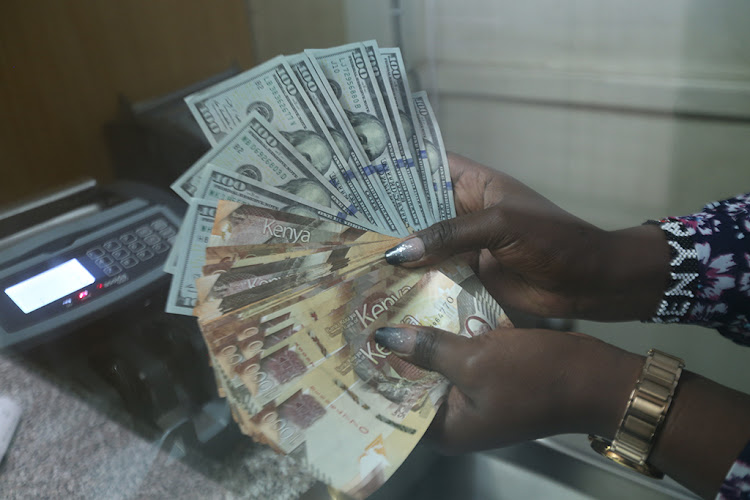Rising dollar presents mixed bag for traders
By Noel.Wandera, January 11, 2023The continued poor performance of the shilling against the US dollar is set to hit Kenyans’ pockets differently in the coming days as players in various sectors count their gains or losses.
A depreciating shilling means importers will be spending more on bringing in goods such as petroleum products and raw materials for factories, raising the cost of inputs for firms that normally pass the additional expenses to consumers.
However, exporters of agricultural products such as tea, coffee and horticulture who are largely paid in dollars are set to benefit from the weakening of the Kenyan currency as they will end up earning more.
This is good news for farmers at a time Agriculture Cabinet Secretary Mithika Linturi is calling for their payments to match current dollar rates.
Speaking in Nairobi during the Kenya Tea Development Authority (KTDA) Annual Directors’ Conference last month, Linturi said his ministry is currently working on a mechanism that will see farmers enjoy favourable foreign exchange (Forex) rates during their transactions.
“If the dollar exchange, for instance, is Sh127, there is no reason as to why the bank should buy dollar from KTDA at Sh119, for that is how we are losing the money that should have benefitted the farmer,” the CS said.The strengthening of the dollar has been at play since last year, a factor that has led to the weakening of the shilling. The Central Bank of Kenya (CBK) data yesterday showed the shilling trading at Sh123.6 to the dollar.
“The shilling weakness is primarily as a result of the dollar strengthening, which has been at play since last year, according to Churchill Ogutu, an economist at IC Group. “The net foreign asset position in the commercial banks is also equally fragile, which implies that banks are finding a challenge in meeting their foreign exchange demands, thus exacerbating the shilling’s weakness,” he said. On the flip-side, Ogutu added, Kenya being a net importer, this means consumption of imports will continue to hurt.
“Authorities might also be forced to channel more financial resources than anticipated into servicing the country’s external debt at the expense of development projects,” he added.
Debt servicing
“Kenya is a net importer, so a stronger dollar means a bigger hit to the economy. Furthermore, it will have some negative spillover on external debt servicing costs as Kenya will have to source more shillings to finance a dollar unit, unlike how it was before,” he said. Kenya’s exports consist largely of cheaper raw materials and agricultural produce whereas her imports consist largely of expensive machinery and value-added manufactured products.
Some of key bulk imported raw materials include clinker that is used as the binder in cement manufacturing and assorted building and construction materials as well as farming inputs. Scaling down to the households, prices of products like cooking oil, palm oil, cooking gas and wheat are expected to increase.
“As imported goods and raw materials become increasingly expensive, it could lead to a rise in domestic costs of production, and consequently the price of domestically produced goods,” said Ronny Chokaa, a research analyst from investment bankers Genghis Capital.
He said throughout 2022, the US dollar has been strengthening against most emerging and frontier market currencies, after the US Federal Reserve hiked the Federal Reserve Rate seven times from 0.25 per cent level to 4.5 per cent levels to curb the rising inflation in their economy.
“This leads to capital outflows from developing states like Kenya into the US,” said Chokaa, a factor that is likely to negatively impact foreign direct investment. With less capital inflows, employment creation is likely to be affected.
More Articles

